
UNESCO Chair on Cultural Digital Heritage at the Cyprus University of Technology
[2018 – Present] The UNESCO Chair for Digital Cultural Heritage was established at the Department of Electrical Engineering, Computer Engineering, and Informatics at the Cyprus University of Technology (CUT) in 2018. The establishment of the Chair at the University of Technology constitutes an international recognition of the important contribution of the Digital Heritage Research Laboratory of the Cyprus Technological University in the field of digitisation, preservation, and promotion of the cultural heritage of Humanity.
Visit Website
Projects 2025

Horizon Europe HERITALISE
[2025 – 2028] HERITALISE mission is to research and develop advanced digitisation techniques and solutions for documenting and representing diverse CH assets, giving a full comprehension of the diverse CH features, visible and non-visible. In addition, AI-powered tools including Machine Learning (ML) will be developed for improved and optimised data post-processing and integration based on standard and expanded methodologies. All this will be connected through a knowledge graph environment that allows the individual aspects known about the CH object to be related and retrievable. As with Wikipedia, by following links it will be possible to learn more about a particular object, what research has been done, and what results have been derived from it. HERITALISE will provide the upcoming ECCCH with a interoperable web-based Ecosystem, advanced input data from improved digitalisation methodologies and preservation supporting tools
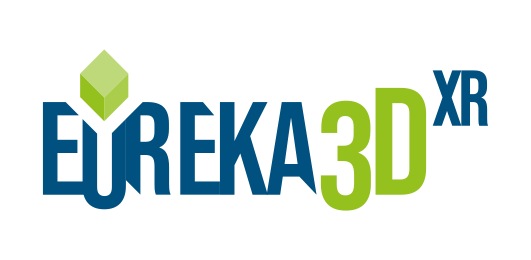
EUreka3D-XR
[2025 – 2027] The aim of EUreka3D-XR is to expand 3D and XR scenarios in the European common data space for cultural heritage. EUreka3D-XR builds upon the three pillars constructed by EUreka3D to create new experiences in extended reality integrated with the European Data Space for Cultural Heritage
Projects 2024

COST Action PRAYTICIPATE
[2024 – 2028] PRAYTICIPATE Participation through Prayer in the Late Medieval and Early Modern World. For centuries, prayer has been central to people’s worldview, to their education and formation, their experience of religion and the Divine, to the creation of societal communities, and to structuring everyday life throughout Europe. Despite the ‘religious turn’ in the humanities, prayer is still often seen as ordinary or even self-evident. This has hitherto prevented a thorough understanding of the history of this powerful and complex phenomenon in the late medieval and early modern world. From a European perspective, this period was formative for the role of prayer in public settings and in people’s personal lives. The phenomenon is marked by plurality and diversity and the disparate nature of research on prayer calls for a strong collaborative international research network that will move toward creating a shared framework for the study of prayer in the Latin Christianity during the late medieval and early modern period. Studying prayer as a participatory practice on several levels (as a communal or social practice, using a variety of material devices (media, objects) that can evoke a spiralling, amplifying effect in the mind of the devotee) will lead to better understanding of prayer (and with it, the history of imagination, hope, and meditation) in its plurality.

COST Action MAIA
[2024 – 2028] The MAIA “Managing Artificial Intelligence in Archaeology” aims to create a community of archaeologists, digital archaeologists, and computer scientists who will work together to develop a shared understanding of AI applications in archaeology. This will include meetings and workshops bringing together researchers who wish to create or use digital collections and training data. Key to this will be training opportunities for documenting archaeological resources optimised for AI research and Short Term Scientific Missions, where researchers can work across borders to understand how to create comparative and training data.
Projects 2023
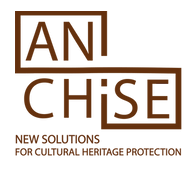
ANCHISE
[2023 – 2026] ANCHISE – ‘Applying New Solutions for Cultural Heritage Protection by Innovative, Scientific, social and Economic Engagement’ aims at offering European societies efficient methods, knowledge, and toolkits to enhance the protection of cultural heritage against looting and illicit trafficking.

TRIQUETRA
[2023 – 2025] The TRIQUETRA project aims at creating an evidence-based assessment platform that allows precise risk stratification, and also creates a database of available mitigation measures and strategies, acting as a Decision Support Tool towards efficient risk mitigation and site remediation.

ENIGMA
[2023 – 2025] ENIGMA shall achieve excellence in the protection of CGs and artefacts from man-made threats by contributing to the identification, traceability, and provenance research of CGs as well as by safeguarding and monitoring endangered heritage sites. ENIGMA objectives are designed to help the involved stakeholders better respond to this complex, and multi-dimensional problem, and leverage active collaboration by fostering and enabling the interlinking of databases, and evidence-based deployment of preventative measures.
Completed Projects

Erasmus+ ExhiBIT
[2024 – 2025] Co-curating in the Phygital Museum and the creation of alternative narratives and transcultural “voices” towards developing inclusive and sustainable museums.

EUreka3D
[2023 – 2024] EUreka3D will prove innovative approaches to digital transformation of CH sector, based on the provision of services and tools, compliant with Europeana CSP, and powered by advanced computing and storage resources. EOSC registered services for authentication and authentication, guidelines and recommendations for high-quality 3D digitization, and representation of holistic documentation in advanced metadata information, all this will be assessed in a pilot where 4 CHIs participate with their contents.

ERASMUS+ ARTEST
[2023 – 2025] The project aims to reinforce education in the field of the Humanities by adopting digital methods of research and education and harmonizing the development of both soft and digital skills during the study process.
See the Overview of Master courses in DCH
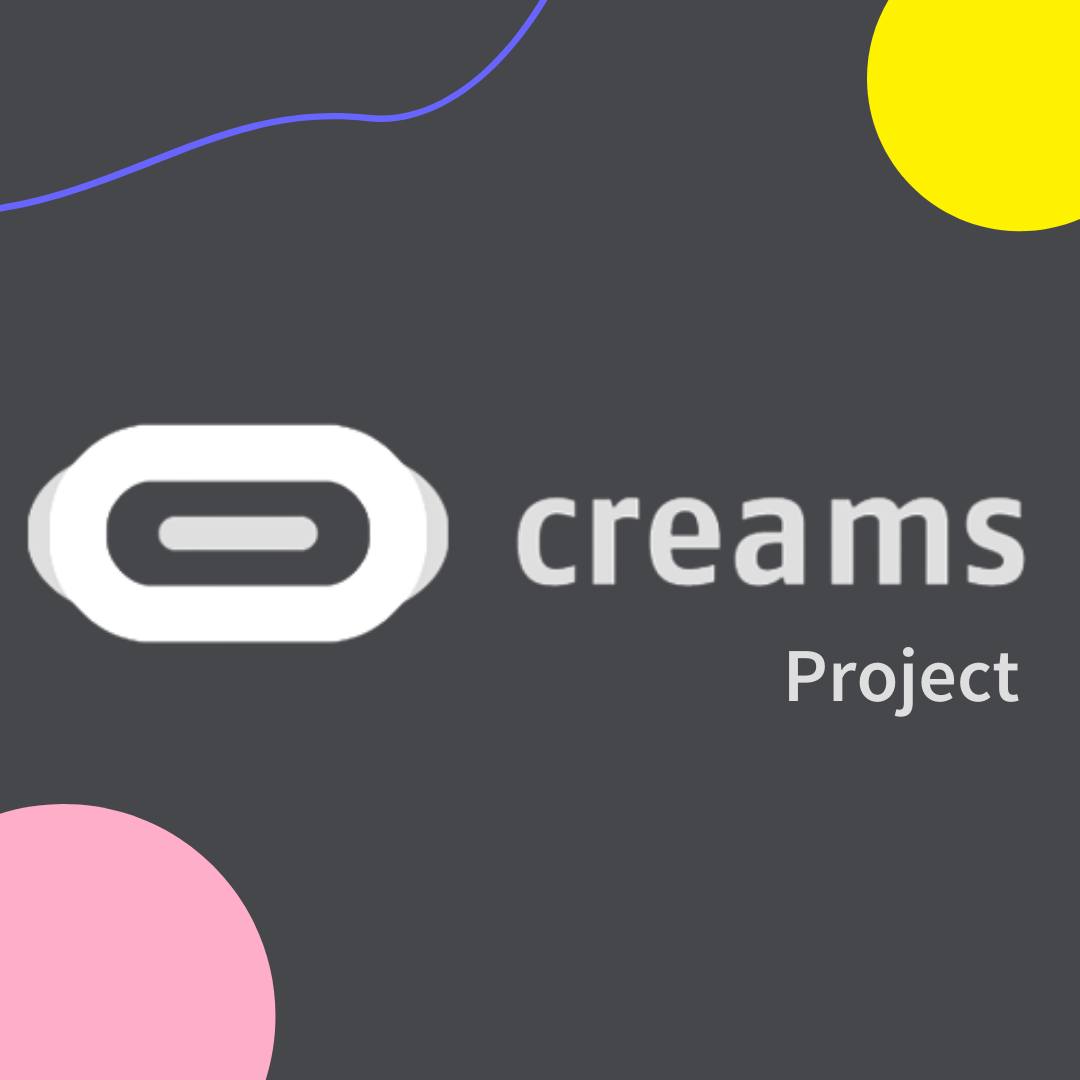
ERASMUS+ CREAMS
[2023 – 2025] In CREAMS, we anticipate educating and creating awareness of various stakeholders in the Higher Education domain with regards to scaffolding creativity of arts students, and deploying a robust and innovative framework and open-source tools for virtual exhibition creation.
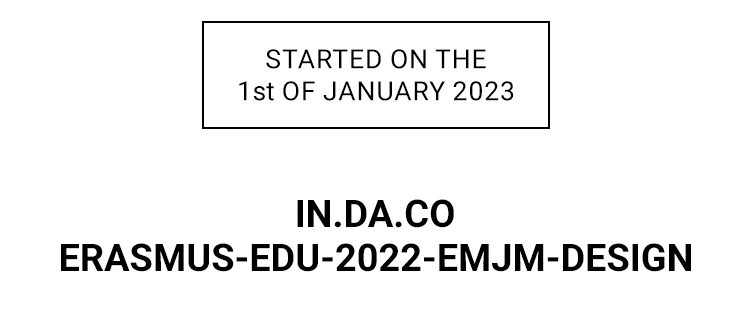
IN.DA.CO
[2022 – 2023] This unique project is concerned with building a master’s degree in conservation in the Mediterranean area from twelve (12) HEIs based in six (6) EU member countries: Italy, France, Spain, Portugal, Malta and Cyprus and two (2) neighbouring countries Lebanon and Tunisia.
The IN.DA.CO. – Innovative Higher Education Master Course for the Conservation and Restoration of Cultural Heritage is a project whose aim is the development of a transnational master programme on the topics of conservation, restoration, and enhancement of cultural heritage in the Euro-Mediterranean area. The master is based on a contemporary approach linked to communication, digital development, economic sustainability, and entrepreneurship.

H2020 TExTOUR
[2021 – 2024] TExTOUR is inspired by the motto “Our heritage: where the past meets the future”, used by the EU to celebrate 2018 as the EYCH, with the aim of encouraging a wider audience to discover and commit to European CH, thus strengthening membership in a legacy and a common cultural space. But this discovery of heritage is not only raised in TExTOUR viewing the tourist as an end user, but it focuses on the implementation of collaborative work methodologies that share the knowledge and needs of all stakeholders in the territory directly and indirectly involved in the Cultural tourism development.

ERASMUS+ The GLAMers
[2021 – 2023] The main goal of the study is to produce a framework that would enable cultural heritage professionals and institutions and other custodians of cultural heritage, providers of 3D digitisation services for cultural heritage and other researchers from the area of 3D digitisation technologies for cultural heritage to define and produce high quality in the context of specific 3D digitisation projects for tangible cultural heritage.
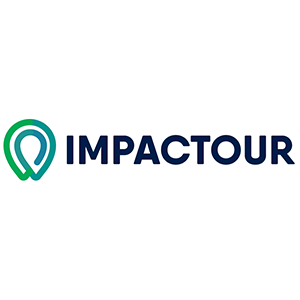
H2020 Impactour
[2020 – 2023] The EU-funded IMPACTOUR project is connecting CT stakeholders and researchers, envisaging new approaches and methods that will support European CT, reinforce a feeling of belonging, value minority cultures and promote Europeanisation.
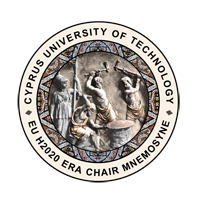
EU H2020 ERA Chair on Digital Cultural Heritage MNEMOSYNE
[2019 – 2023] Mnemosyne is a project for a single-stage Coordination and Support Action submitted under WIDESPREAD-03-2017-ERA Chairs. Context Cultural Heritage is a strategic resource for Europe with high cultural, social, environmental and economic value. The era of Digital Cultural Heritage (DCH) is now well underway and the European research resource for DCH has grown significantly in recent years. Cultural Heritage is a strategic resource for growth, job creation and a role to play for more cohesive and sustainable regions in the EU. The Digital Heritage Research Laboratory (DHRLab) at Cyprus University of Technology became a beacon in the Eastern Mediterranean and Europe through several key initiatives in DCH research training, innovation, and policy coordination. MNEMOSYNE, will implement a research agenda, run a new Master Course focused on holistic DCH documentation and create a centre of excellence on DCH by 2024.

EU H2020 Marie S. Curie ETN CHANGE – Cultural heritage analysis for new generations
[2019 – 2023] The CHANGE project will train a new generation of early-stage researchers towards a common goal, namely the assessment of changes in tangible cultural heritage (CH) objects and their monitoring in the atmosphere and/or during their conservation treatment using multimodal imaging techniques in complement to more traditional analytical techniques. Their research will consist of an optimised capturing of data and their analysis, visualisation and management to ensure better documentation and long-term preservation of our common EU CH. This work will be carried out within an interdisciplinary environment involving 5 CH and 4 Information & Communication Technologies (ICT) beneficiary institutions as well as 9 CH, ICT, and industrial partners from 8 EU countries.

Interreg Greece – Cyprus, DigiArc 2014-2020
[2019-2023] The central idea of the project is the preservation, protection, and promotion of the cultural environment in Cyprus and the Aegean islands. This material is of unique value in linking the historical path of the two regions, as it will document and highlight monuments of common cultural history and their surroundings with exceptional accuracy and fidelity.
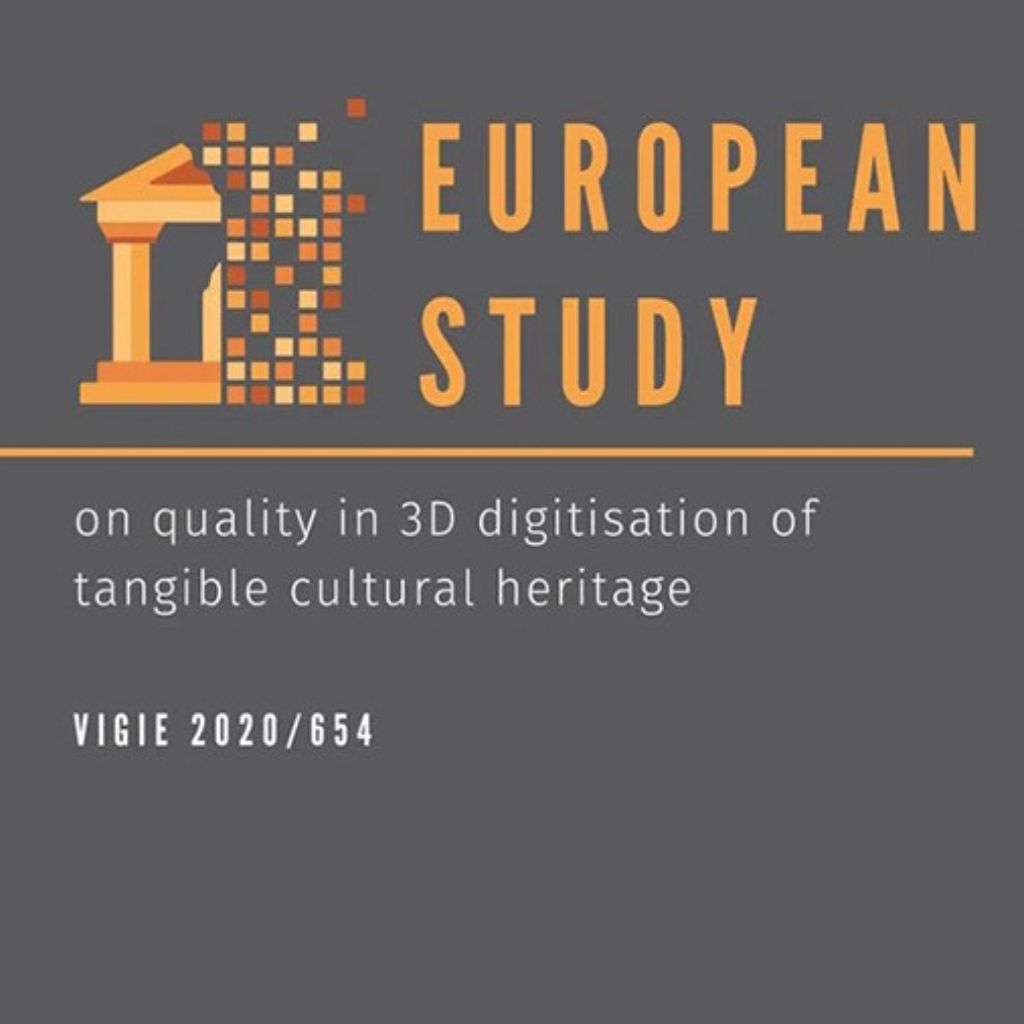
EU Study VIGIE 2020/654 – Study on Quality in 3D Digitisation of Tangible Cultural Heritage
[2020 – 2022] The main goal of the study is to produce a framework that would enable cultural heritage professionals and institutions and other custodians of cultural heritage, providers of 3D digitisation services for cultural heritage and other researchers from the area of 3D digitisation technologies for cultural heritage to define and produce high quality in the context of specific 3D digitisation projects for tangible cultural heritage.
View Project Video – PDF – Full Study

Creative Europe OPHERA
[2019 – 2023] The OPHERA project aims to reveal, as a cultural expression, the cultural heritage restoration process currently ongoing in the territories affected by the Central-Italy 2016 earthquake, in the Marche Region. The project assumption is the awareness about the need to allow citizens participation and ensure transparency all along the restoration process.

ERASMUS+ EU-OBP
[2019 – 2021] Project EU-OBP: European Open Badges Platform, funded under the Erasmus+ program of the European Commission, wants to assess, develop and promote the common EU platform for digital badges, targeted at adult education organizations, adult educators and adult learners that also represent the main target groups.
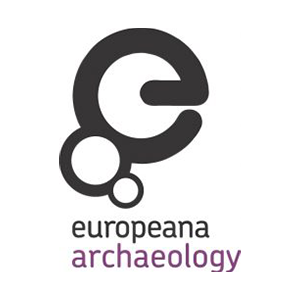
Europeana Archaeology
[2019 – 2020] The project aimed to increase the amount of high-quality digital content for Europe’s rich heritage of archaeological monuments, historic buildings, cultural landscapes and artefacts that are accessible online through the Europeana Archaeology collection.

Europeana Common Culture
[2019 – 2020] Europeana Common Culture (ECC) contributed to the development of a harmonized and sustainable data aggregation infrastructure in Europe, improved data quality and encouraged engagement with cultural heritage through the Europeana website. The project ran from January 2019 to December 2020, with 24 partners from 21 European countries.
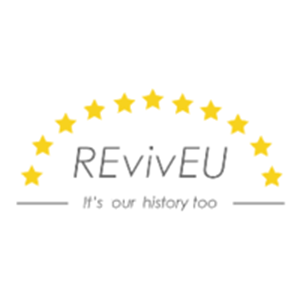
REvivEU…it’s our history too!
[2019 – 2020] REvivEU is a project financed by the EU in the framework of the European Year of Cultural Heritage. The objective is to realize a series of pop-up exhibitions across 2019 in various European cities, to celebrate the diversity of European cultural heritage and to empower citizens in a more participative approach to cultural heritage.
Visit Cyprus Event – Opening Greeting by DG of EU-DG EAC

Digitale 3D-Rekonstruktionen als Werkzeuge der Architekturgeschichtlichen Forschung
[2018 – 2020] “Painted Byzantine Churches of Troodos Mountain” in Cyprus, are dating from the 11th to 14th century AD. These churches and monuments were inscribed in UNESCO’s list of World Heritage Monuments since 1985. UNESCO‘s criteria were both the architecture and the landscape design but also the fact that these monuments are “exceptional testimony to a cultural tradition”.

H2020 Virtual Multimodal Museum
[2016 – 2019] Virtual Multimodal Museum (ViMM) is a high-visibility and participative Coordination and Support Action (CSA), funded under the EU Horizon 2020 programme (CULT-COOP-8-2016). ViMM brings together Europe and the world’s leading public and private sector organisations working on Virtual Museums and in the wider sector of Digital Cultural Heritage, to support high-quality policy development, decision making and the use of technical advances.
View Project’s Video

H2020 Reflective 7 INCEPTION – 3D Semantics
[2015 – 2019] INCEPTION realises innovation in the 3D modelling of cultural heritage through an inclusive approach for time-dynamic 3D reconstruction of artefacts, built and social environments. It enriches the European identity through an understanding of how European cultural heritage continuously evolves over long periods of time. INCEPTION’s Inclusive approach comprises time dynamics of 3D reconstruction (‘forever’); addresses scientists, engineers, authorities and citizens (‘for everybody’); and provides methods and tools applicable across Europe (‘from everywhere’).

TD1406 – Innovation in Intelligent Management of Heritage Buildings (i2MHB)
[2015 – 2019] COST (European Cooperation in Science and Technology) is a funding organization for research and innovation networks. Our Actions help connect research initiatives across Europe and beyond and enable researchers and innovators to grow their ideas in any science and technology field by sharing them with their peers. COST Actions are bottom-up networks with a duration of four years that boost research, innovation, and careers.
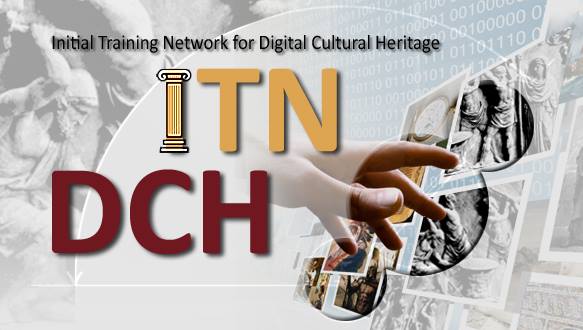
Marie Curie Initial Training Network on Digital Heritage – ITN-DCH
[2013 – 2017] The “Initial Training Network for Digital Cultural Heritage: Projecting our Past to the Future” with the acronym ITN-DCH, is the first and one of the largest Marie Curie fellowship projects in the area of the e-documentation / e-preservation and CH protection funded by the European Union under the FP7 PEOPLE research framework.
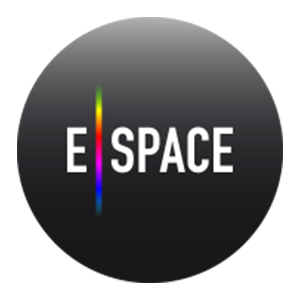
CIP ICT-PSP Europeana Space
[2014 – 2017] The objective of Europeana Space is to increase and enhance the creative industries’ use of Europeana by delivering a range of resources to support their engagement. The use of Europeana by the creative industries is still limited by factors including issues around the IPR status of content and the need for business models demonstrating the potential for exploitation of available content. In addressing these problems Europeana Space brings together high-level key expertise from the European creative industries, technology-based enterprises, the cultural heritage sector and higher education.
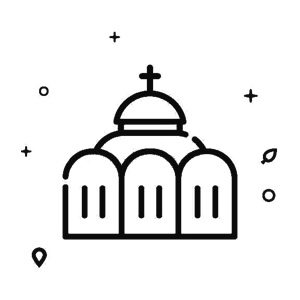
e-Documentation of the CY UNESCO WHL Monuments In cooperation with the National Technical University of Athens, Greece
[2012 – 2017] “Painted Byzantine Churches of Troodos Mountain” in Cyprus, are dating from the 11th to 14th century AD. These churches – and monuments were inscribed on the UNESCO list of World Heritage Monuments since 1985. UNESCO‘s criteria were both the architecture and the landscape design but also the fact that these monuments are “exceptional testimony to a cultural tradition”.

1st Europeana 3D Task Force Group on Advanced Documentation of 3D Digital Assets
[2017 – 2017] The digital documentation of cultural heritage assets is inherently a multimedia process, addressed through the digital representation of the shape, appearance and conservation condition of the heritage/cultural object for which a 3D digital model is expected to become the representation. 3D representations should progress beyond current levels to provide the necessary semantic information (knowledge/story) for in-depth studies and use by researchers, and creative users, offering new perspectives and understandings. Digital surrogates can add a laboratory dimension to on-site explorations originating new avenues in the way tangible cultural heritage is addressed.
The generation of high-quality 3D models is still very time-consuming and expensive, not at least because the modelling is carried out for individual objects rather than for entire collections and formats provided in digital reconstructions are frequently not interoperable and therefore cannot be easily accessed and/or reused or sustained.
Many projects have investigated aspects related to cultural heritage assets and highly elaborated theoretical approaches, principles and guidelines are proposed for data schemes and infrastructures. On the other hand, in practice, 3D reconstruction projects are often based on unique and prototypic semantics, workflows, and infrastructures and are customized for a specific purpose.
The recommendation covers semantically-aware 3D objects with a view to improving their archiving, retrieval, reusability and sustainability enriching the geometrical structure(s) with related knowledge, taking into account the range of devices, models and software applications involved.

CIP ICT-PSP LoCloud
[2013 – 2016] LoCloud built on the achievements of CARARE in establishing a repository-based aggregator for Archaeological and Architectural heritage and of Europeana Local in its work with local institutions and their regional and national aggregators, which resulted in the contribution to date of well over 5 million items to Europeana.
View Project Video

Marie Curie IAPP 4D-CH-World
[2013 – 2016] Marie Curie IAPP4D-CH-World is a major EU-funded programme which brings together six (6) leading European partners in a transnational network, aiming at implementing a multidisciplinary and intersectoral research and training programme between the academic and industrial partners in the field of Computer Graphics, Digital Libraries and Cultural Heritage.
View Project Video
Association Membership

CLARIN-EU ERIC
CLARIN is a European Research Infrastructure providing access to digital language resources and tools from across Europe and beyond to researchers in the humanities and social science. It focuses on the widely acknowledged role of language as cultural and social data and the increased potential for comparative research of cultural and societal phenomena across the boundaries of languages
Visit Website
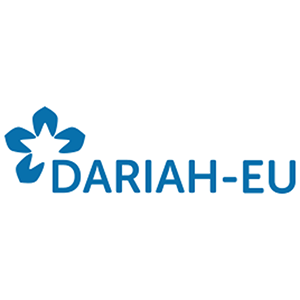
DARIAH-EU ERIC
DARIAH is the Digital Research Infrastructure for the Arts and Humanities. It is being established as a European Research Infrastructure Consortium (DARIAH-ERIC), a European legal entity. The grand vision of DARIAH is to facilitate long-term access to – and use of – all European Arts and Humanities digital research data.
Visit Website
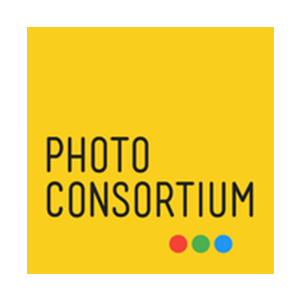
Photoconsortium Association
PHOTOCONSORTIUM is Europeana’s domain aggregator specialising in photographic content, and since 2014 has made accessible in Europeana over 500,000 photographs from around 50 partners, showcasing famous heritage collections from prestigious public institutions and private agencies, and also unveiling hitherto unknown photographic content from crowdsourcing campaigns, private collectors and smaller local archives.
Visit Website
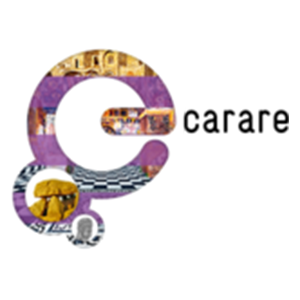
CARARE Association
CARARE is a non-profit association that brings together agencies and organizations, research institutions, specialist digital archives and others with an interest in the archaeological and architectural heritage.
Visit Website
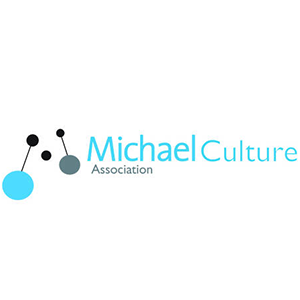
Michael Culture Association
Michael Culture Association (MCA) is a not-for-profit organization (Aisbl) created in 2007.MCA is the only European trans-domain network for Cultural Heritage. It was created following the Michael and Michael Plus European projects, which permitted the creation of the Michael European Portal, the Multilingual Inventory of Cultural Heritage in Europe.
Visit Website
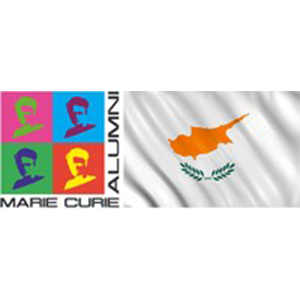
Marie Curie Alumni Association – Cyprus Chapter
The MCAA is an international non-profit organization established and supported by the European Commission, but entirely run by volunteer members and with a bottom-up approach at its core.MCAA members have in common to benefit or have benefitted from MSCA funding, therefore sharing a strong background in research, but their career paths are diverse and touch all economic sectors.
Visit Website
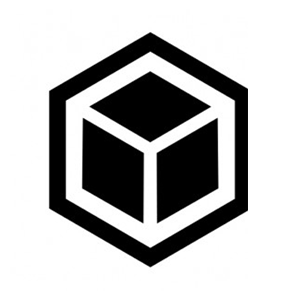
Digitale Rekonstruktion
The digital 3D reconstruction of cultural heritage, especially the destroyed and/or unrealized art and architecture, is used more and more widely for visualization and mediation. The development of information and communication technology allows us to generate breathtaking images, which are increasingly being expanded to include interactivity and augmented reality.


